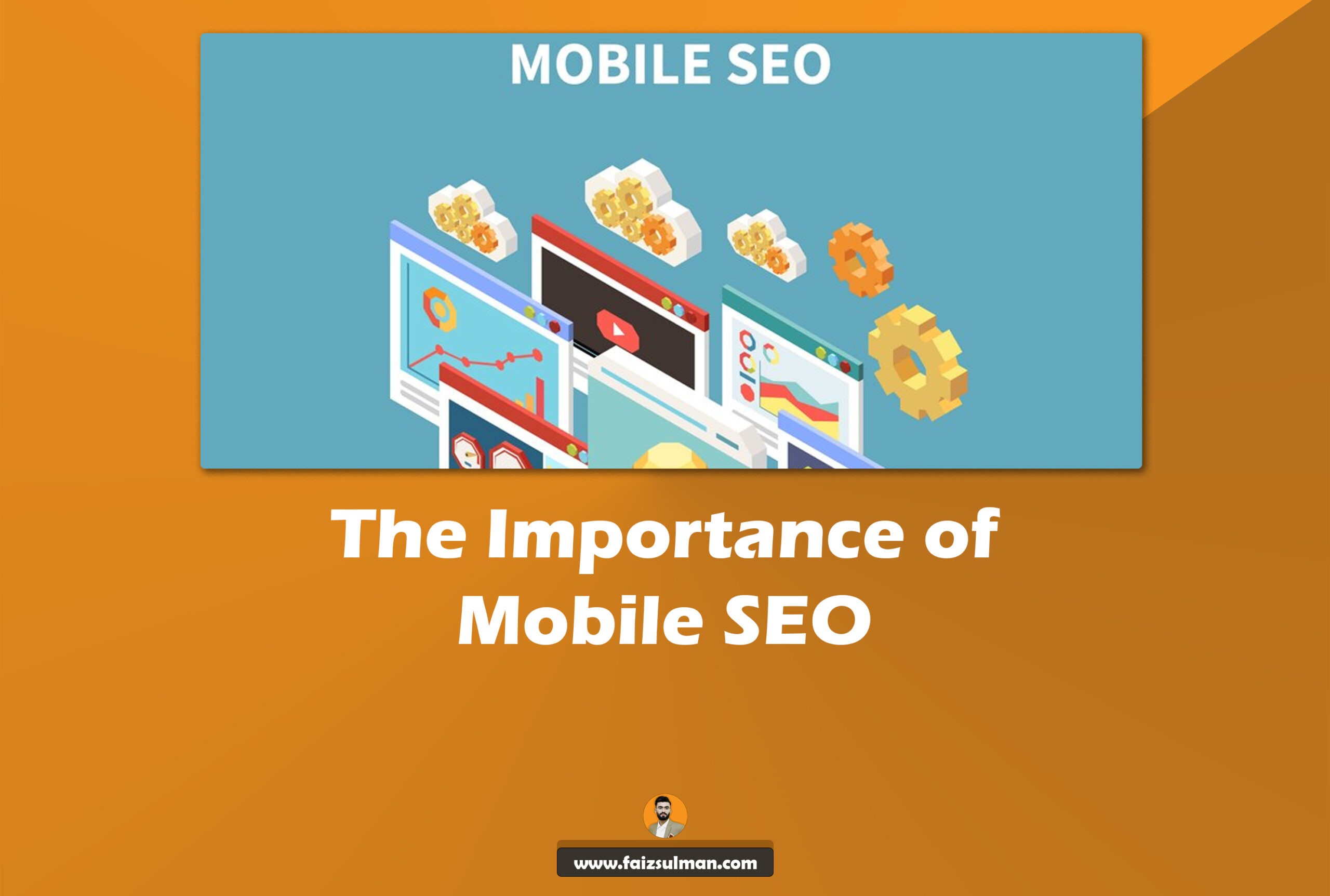The Importance of Mobile SEO: Boost Rankings


-
Written by
faizsulman-com
-
Category
SEO, Blog, Web Development, WordPress
-
Date
11 October 2024
The Importance of Mobile SEO: Why Your Website Needs It Now
With mobile traffic surpassing desktop usage, businesses must ask themselves: Is your website optimized for mobile users? The shift to mobile browsing has revolutionized the way we consume content and interact online. Mobile-friendly websites are no longer a luxury—they’re a necessity. Mobile SEO is not just about making your site look good on small screens; it’s about improving your search rankings, increasing traffic, and ensuring a seamless user experience. In this article, we’ll explore why optimizing for mobile SEO is essential for businesses in today’s mobile-first world.
1. Understanding Mobile SEO: What Is It?
Mobile SEO refers to the process of optimizing your website to ensure that it performs well on mobile devices such as smartphones and tablets. But why is this crucial? According to recent statistics, over 50% of global website traffic now comes from mobile devices. This shift means that Google and other search engines prioritize mobile-friendly websites. If your website isn’t optimized for mobile, it will likely rank lower in search engine results, leading to reduced visibility and fewer visitors.
Key aspects of mobile SEO include:
- Mobile optimization: Ensuring that all elements of the website, such as images, text, and buttons, are responsive and adaptable to different screen sizes.
- Responsive design: A design technique that adjusts the layout and content based on the device being used.
- Mobile page speed: Reducing load times, as slow-loading sites tend to have higher bounce rates on mobile.
2. Mobile-First Indexing: The Game Changer
In 2019, Google officially switched to mobile-first indexing, which means that Google predominantly uses the mobile version of a website for indexing and ranking. This decision underscores how vital it is for businesses to prioritize mobile SEO.
Why does mobile-first indexing matter?
If your website isn’t optimized for mobile, it might perform poorly in search rankings, regardless of how well it ranks on desktop. Mobile-first indexing is a clear message from Google: Mobile experience comes first.
This shift means businesses must focus on:
- Mobile-friendly content: Content that is easily consumable on mobile devices, including shorter paragraphs, larger fonts, and properly sized images.
- Optimizing user experience on mobile: Enhancing navigation, minimizing pop-ups, and ensuring touch-friendly buttons.
3. The Impact of Mobile SEO on User Experience

A great mobile user experience is essential for keeping visitors on your site. Did you know that 53% of mobile users will leave a webpage if it takes longer than three seconds to load? This is why mobile page speed is a critical factor in mobile SEO. Beyond speed, the site’s design, ease of navigation, and overall functionality directly affect the user’s journey.
Here are a few ways to improve user experience with mobile SEO:
- Fast loading times: Compress images and use browser caching to reduce page load times.
- Easy navigation: Implement a clear, simple menu structure with easily clickable buttons.
- Readable text: Ensure that text sizes are adjustable for readability without zooming.
When users have a seamless experience on your site, they’re more likely to stay longer, engage with your content, and return in the future. The better the user experience, the more likely you are to see improved conversion rates.
4. Why Mobile SEO Matters for Search Rankings
Google has made it clear that mobile usability directly influences search rankings. If two websites offer similar content but one is optimized for mobile and the other isn’t, the mobile-friendly site will outrank the other. Mobile SEO is no longer optional—it’s essential for staying competitive in search results.
Mobile search engine ranking is influenced by factors such as:
- Mobile-friendly design: Websites that are easy to navigate on mobile devices will rank higher.
- Mobile search behavior: Understanding how mobile users search can inform content strategies, as mobile search queries tend to be more location-based and shorter.
- Mobile optimization: Optimizing for mobile ensures that users and search engines can easily access your content.
By prioritizing mobile SEO, you not only improve your ranking but also your overall online presence.
5. How to Implement Effective Mobile SEO for Your Website
Now that we understand the importance of mobile SEO, the next step is implementation. Here are some practical mobile SEO tips for businesses looking to optimize their websites:
- Use a responsive design: Ensure your website automatically adjusts to fit any screen size.
- Optimize page speed: Compress images, enable browser caching, and minimize redirects to enhance load times.
- Prioritize mobile-first content: Shorten paragraphs, use bullet points, and format text to make it more digestible for mobile users.
- Test your mobile website regularly: Use tools like Google’s Mobile-Friendly Test to identify and fix issues.
- Focus on local SEO: Since many mobile searches are location-based, optimize for local keywords and use location-specific content.
By following these best practices, you can ensure that your website not only looks great on mobile devices but also performs well in search engine rankings.
Conclusion: Is Your Website Mobile-Ready?
As mobile usage continues to rise, businesses must adapt or risk falling behind. Mobile SEO is more than just a trend—it’s the future of digital marketing. By optimizing your website for mobile, you can enhance the user experience, improve search engine rankings, and stay competitive in an increasingly mobile-first world.
So, is your website truly mobile-friendly? If not, now is the time to make the necessary changes. Investing in mobile SEO will pay off in terms of higher traffic, better engagement, and improved search rankings. After all, in today’s digital landscape, if your website isn’t optimized for mobile, you might as well not exist.

